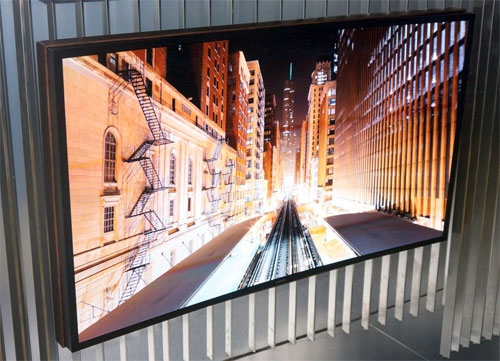It turned out that Samsung had a flexible OLED television on display at CES 2014 too, despite not making a big hoo-ha about it. Note that Samsung’s bendable OLED is not the same as its 85-inch LCD-based prototype unveiled a few days earlier. That the company neither made any public announcement about this nor showcase any other OLED TVs is telling about where Samsung stands on the highly anticipated display technology.

In fact, there’s some more chilling news for those who are banking on OLED TV prices coming down in the next year or so. According to Samsung’s vice president for visual display HS Kim, it’s looking like we won’t see affordable OLED TVs for at least another three to four years – one to two years later than previous estimates.
Samsung and its cross-town rival LG Electronics are the only two major TV makers to really push the development of OLED TVs over the last couple of years. But to date, neither company has been able to manufacture large-sized OLED televisions at an affordable cost, due to problems with production yields. The crux of the problem is that OLED panels are just too thin and delicate, and many get scrapped before they make it off the production floor.
Previously, the word was that Samsung and LG were making steady progress with this OLED manufacturing business, with significant improvements to production yields expected in the next couple of years. Sadly, that doesn’t appear to be the case any longer, after Kim admitted in an interview with USA Today that affordable OLED displays were still likely to be three or four years away.
“I’m really, really terribly sorry to say this, but it will take more time…I believe it will take around three to four years,” said Kim
Kim’s comments might also go some way towards explaining why Panasonic and Sony recently allowed their OLED TV co-development partnership to expire. It also explains why Samsung and LG’s current OLED models still command a price tag of at least £4,999, which is out of reach for most consumers.
This will be hugely disappointing news for AV connoisseurs, because many see OLED as the successor to plasma TVs which are all but dead and buried these days. OLED actually combines some of the best features of plasma and LED, with super deep blacks and sky-high contrast levels, delivering the most dazzling images ever seen on a TV display.
In his interview, Kim admitted that the high prices of OLED TVs were in part designed to keep demand down to a manageable level, because Samsung and LG simply aren’t capable of mass producing them yet.
“Not many consumers tried to purchase OLED TVs at that price,” said Kim.
Kim also admitted that the industry failed to foresee the difficulties it would have manufacturing OLED TVs when they first introduced them at CES in 2012.
Source: USA Today via TV Predictions